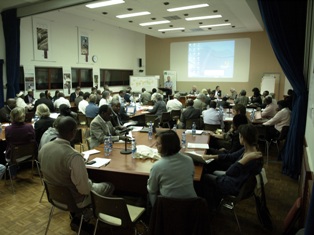Conference Summary by Amdissa Teshome, FAC Ethiopia
The second day began as packed as the first. Four very senior pastoral researchers were asked to kick start the day by presenting their respective FIVE things that have changed in the last 30 years. The following are the key synthesis of issues presented by the four speakers (there are some overlaps):
- Limited information flow (getting information from one man [sic] in the 70s versus the internet today). This was meant to indicate that if one was working on a livestock/pastoral project in the 70s, the source of information was very limited but today plug into the internet for a given topic or issue, you will be overwhelmed with information
- Primary focus on productivity – we were driven by increasing productivity of livestock and paid little or no attention to other [human] aspects. Veterinary service and modern range management based on Australian and USA models was the focus.
- Population has increased dramatically (per capita holding dropped; economic diversification became necessary).
- Land fragmentation – not in the highland sense of the land being divided because increase in family size but land being divided for different activities leaving little land for grazing. Agriculture being practiced for subsistence; wage labour and tourism also increased but pastoralism still dominant.
- Small town – with population growth small towns have grown and are within reach of pastoralists.
- Education – has progressively increased especially when fees were waived. It used to be considered immoral in the old days. Presently, more educated pastoralists are pursuing national level professions and vocations strengthening pastoral profile and increased voice in the national development agenda (enhanced language ability, mathematics, computing skills). For example, in the first conference on the future of pastoralism in 1971, there were no pastoralists; no women; and most participants were anthropologists. Now it is different – we have pastoralists, we have lots of women and anthropologies are in the minority.
One of the panellists, a pastoralist, a researcher and a Professor, declared “I am a pastoralist . Education has never changed me and it will never do. Pastoralism is a being. Goes beyond accumulation of property”. I wonder how many of us coming from farming parents can say “I am a farmer; education has never changed me ….”?
With these thought provoking ideas, we went into three parallel sessions. I joined the alternative livelihoods and exists from pastoralism session.
There were three presentations but let me give you a highlight of the first one.
It was a comparison of pastoral and settled livelihood. Settled life is attractive because of social services (education, water, health) and food security. Pastoralism requires mobility, pasture and protection. Pastoralists look for alternatives because of declining livestock; drought and famine; loss of grazing land; conflict. However, settled life also has costs: poor housing; decline in moral economy; increased idle youth; change in belief and customs. Overall, on nutrition grounds for example, pastoralist children are better nourished than settled children because milk consumption. Under normal circumstances, pastoral children consume three times more milk than settled children.
